The aliens have landed!! No…..they are not aliens! They’re natives!This is the caterpillar of the Sycamore tussock moth (Halysidota harrisii). Adorable, right?
Q:) What does he, the spaceship, and the economy all have in common?
A:) They all benefit greatly from a soft landing!
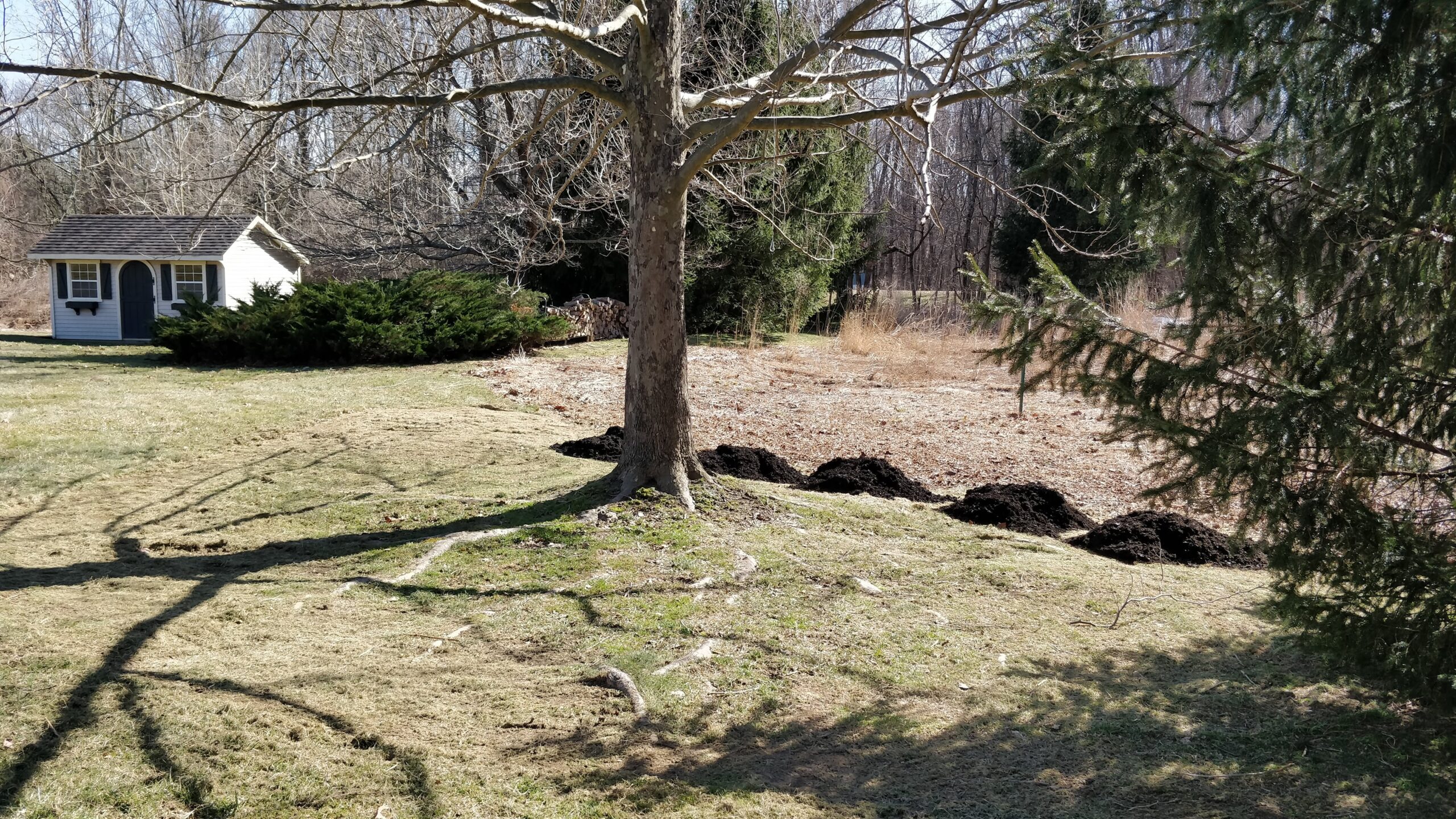
Upon reading Chapter 8: Restoring Insects, the Little Things That Run the World, in Nature’s Best Hope, A New Approach to Conservation That Starts in Your Yard, by Tallamy I had a realization.
There was a large American Sycamore (Platanus occidentalis) tree in our backyard that had some root exposure, making it difficult to maintain the lawn. So, we removed the lawn! Our “a-ha! moment” came when we decided it was time for the Sycamore to become a garden all its own, supporting the whole life cycle of a caterpillar where a layered landscape offers a spot for pupating caterpillars. (The tussock moth uses the Sycamore as its host plant).
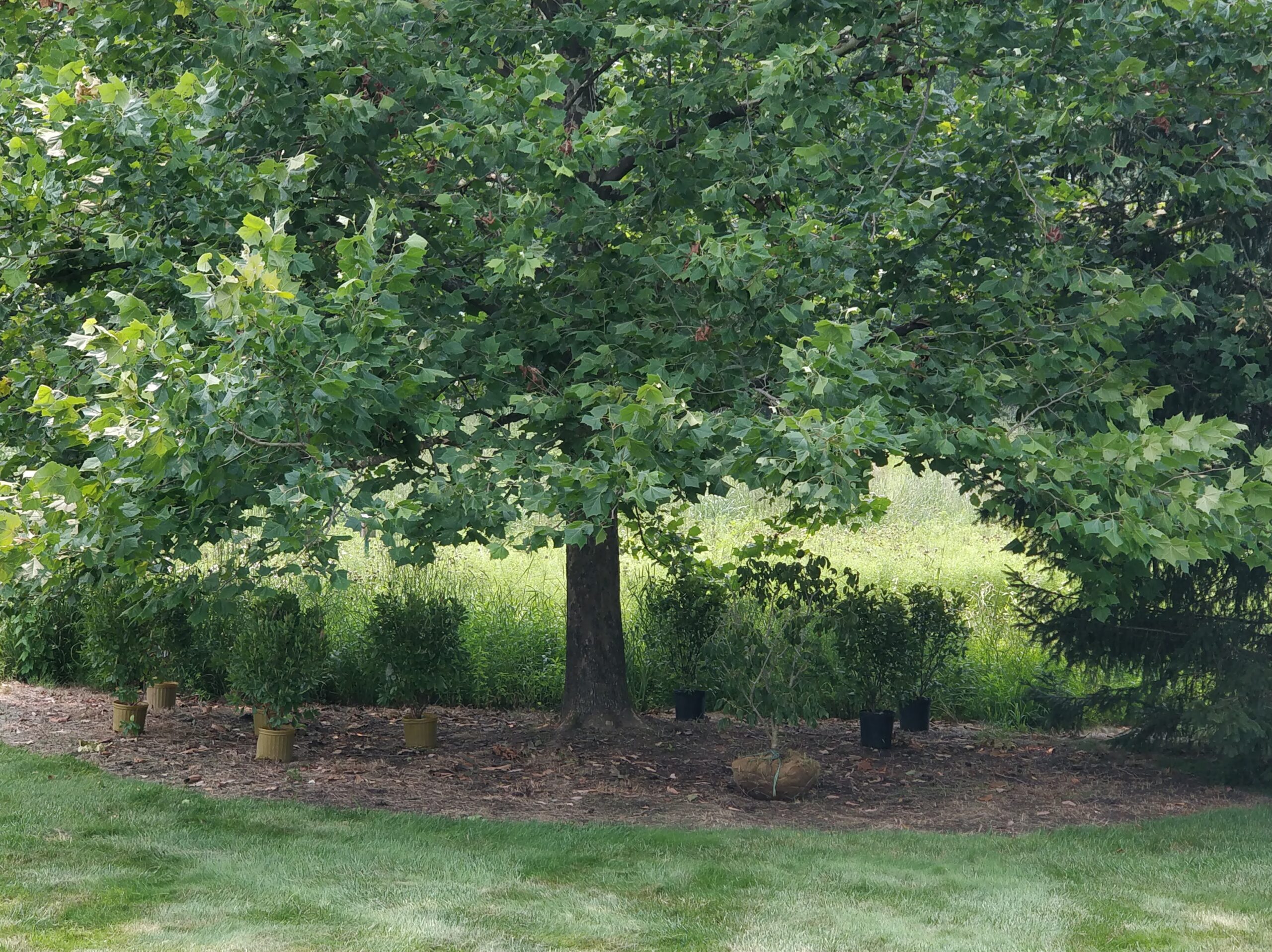
Creating a Layered Landscape, or as we affectionately call it, a caterpillar garden went something like this last year:
In our caterpillar garden at approximately 540 sq feet, we have small shrubs like the Red Buckeye, Pale Pink Summersweet (Clethra alnifolia) and some shade loving natives like:
Pink Turtlehead
Mistflower
Dwarf Joe Pye Weed
Cardinal Flower
Great Blue Lobelia
Ostrich Fern
Beebalm
Sensitive Fern
Obedient Plant
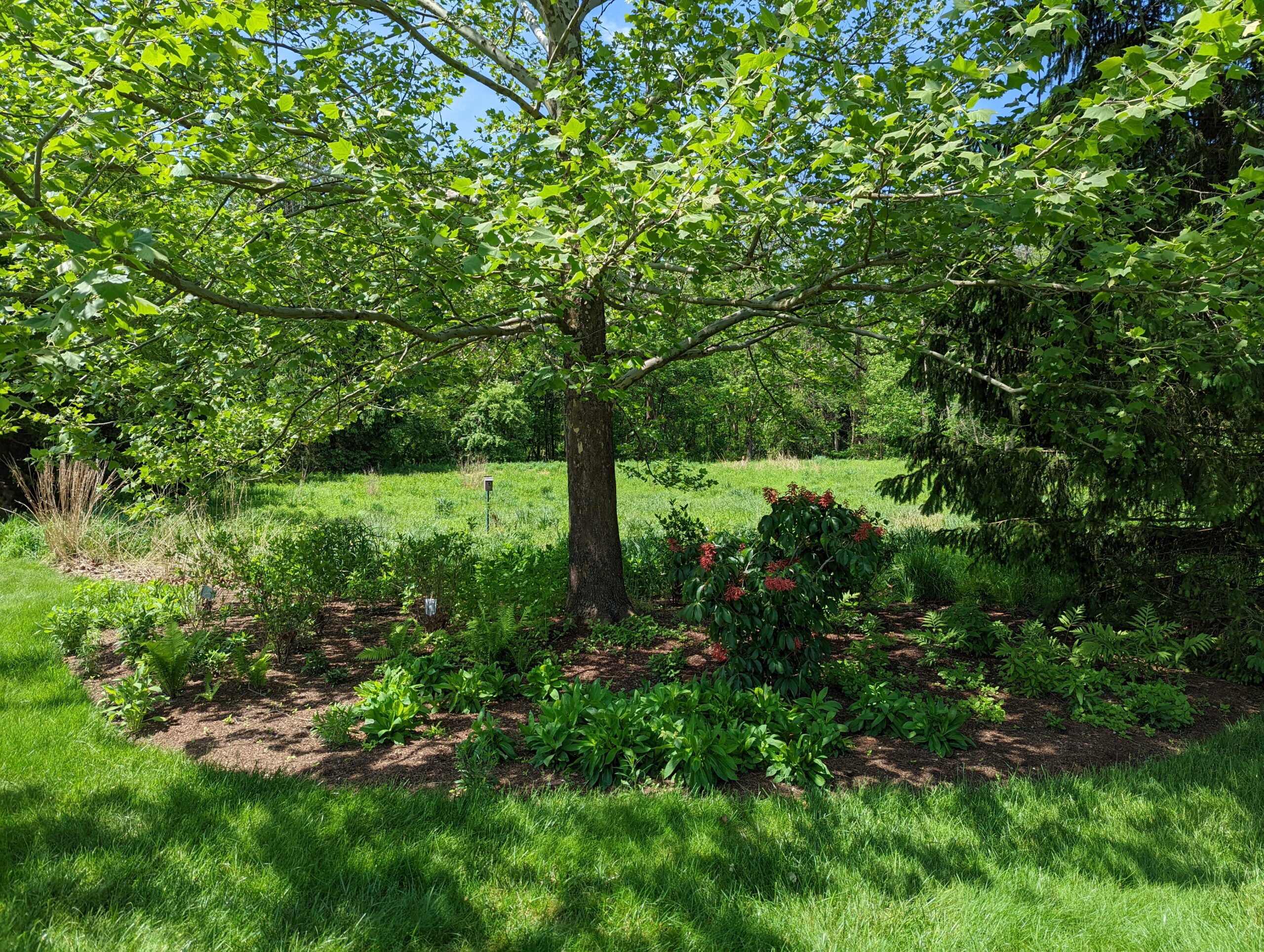
Spring, 2021
Some Black-eyed Susans made their way into the garden as well, from a neighboring location. But…you can’t rake up or tidy in the fall! Let all that “black gold” as Tallamy refers to it decompose and provide a safe hiding spot all winter and into spring when the lifecycle begins anew.
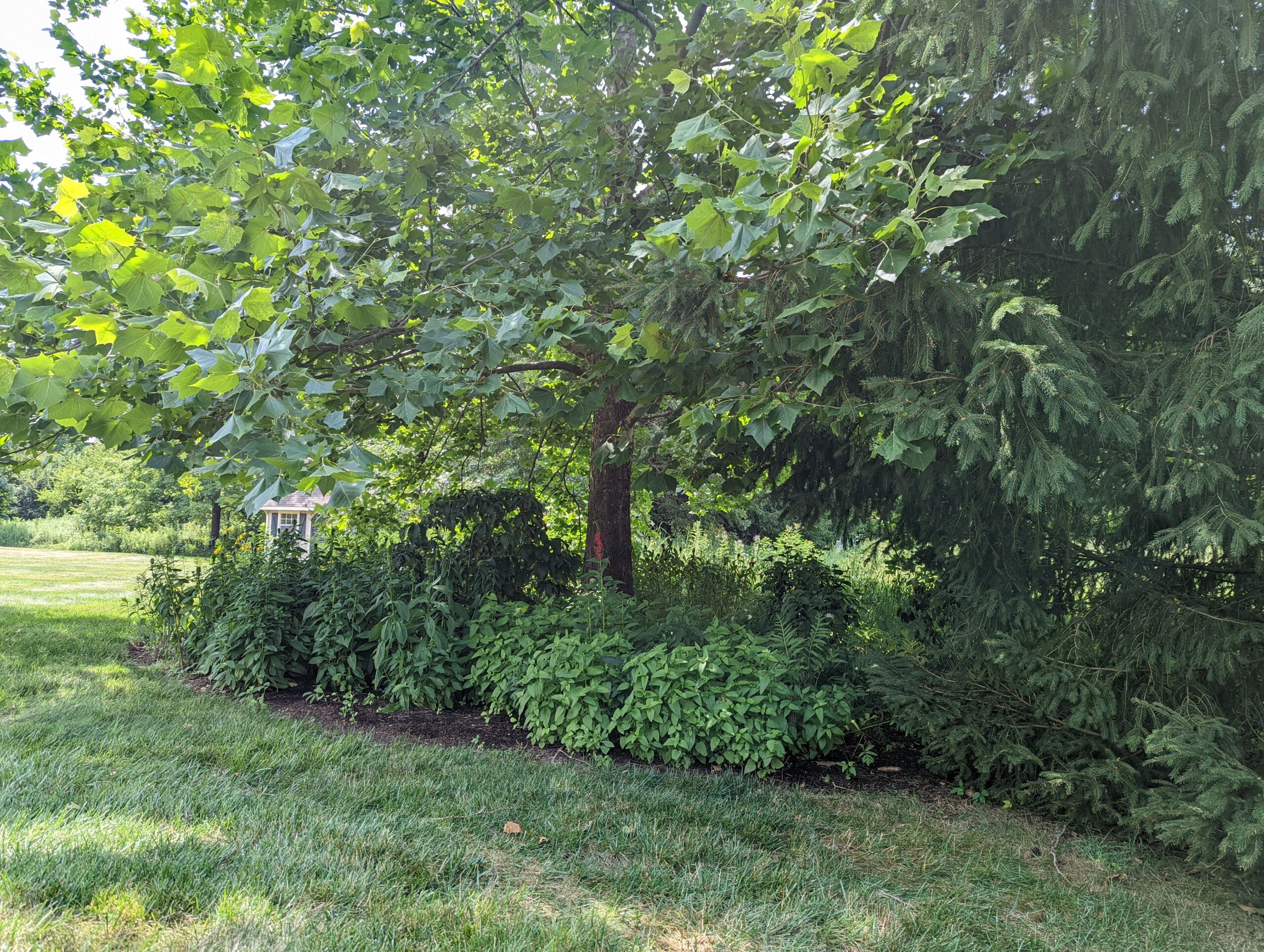
Summer 2022
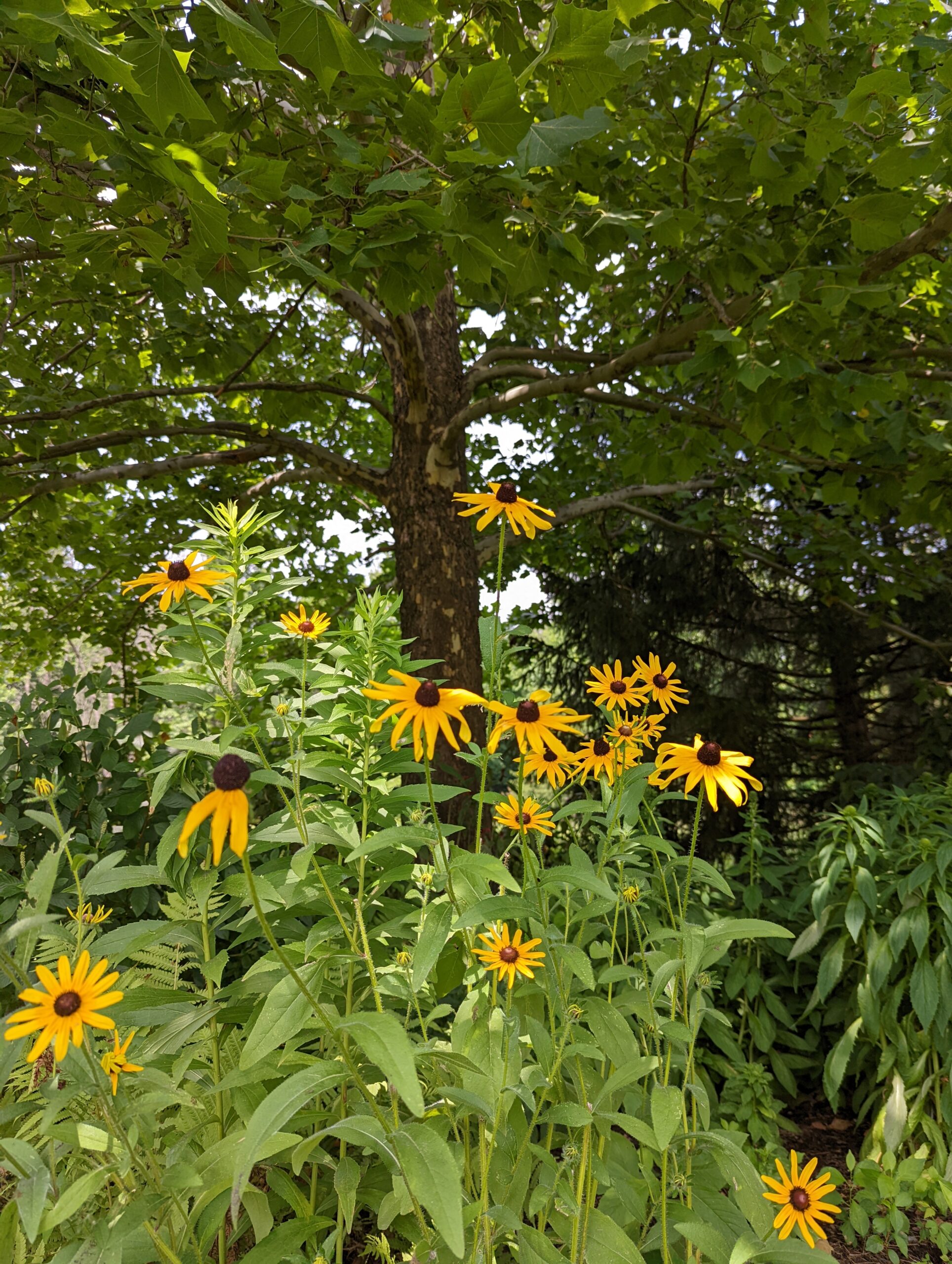
Summer 2022
It was only planted last spring of 2021 and yet, the growth is substantial. Seeing a hummingbird nectaring on the Bee Balm ‘Jacob Cline’ (Monarda didyma ‘Jacob Cline’) just last month was an added cherry on top! Hummingbird, not captured on camera! They are too fast!
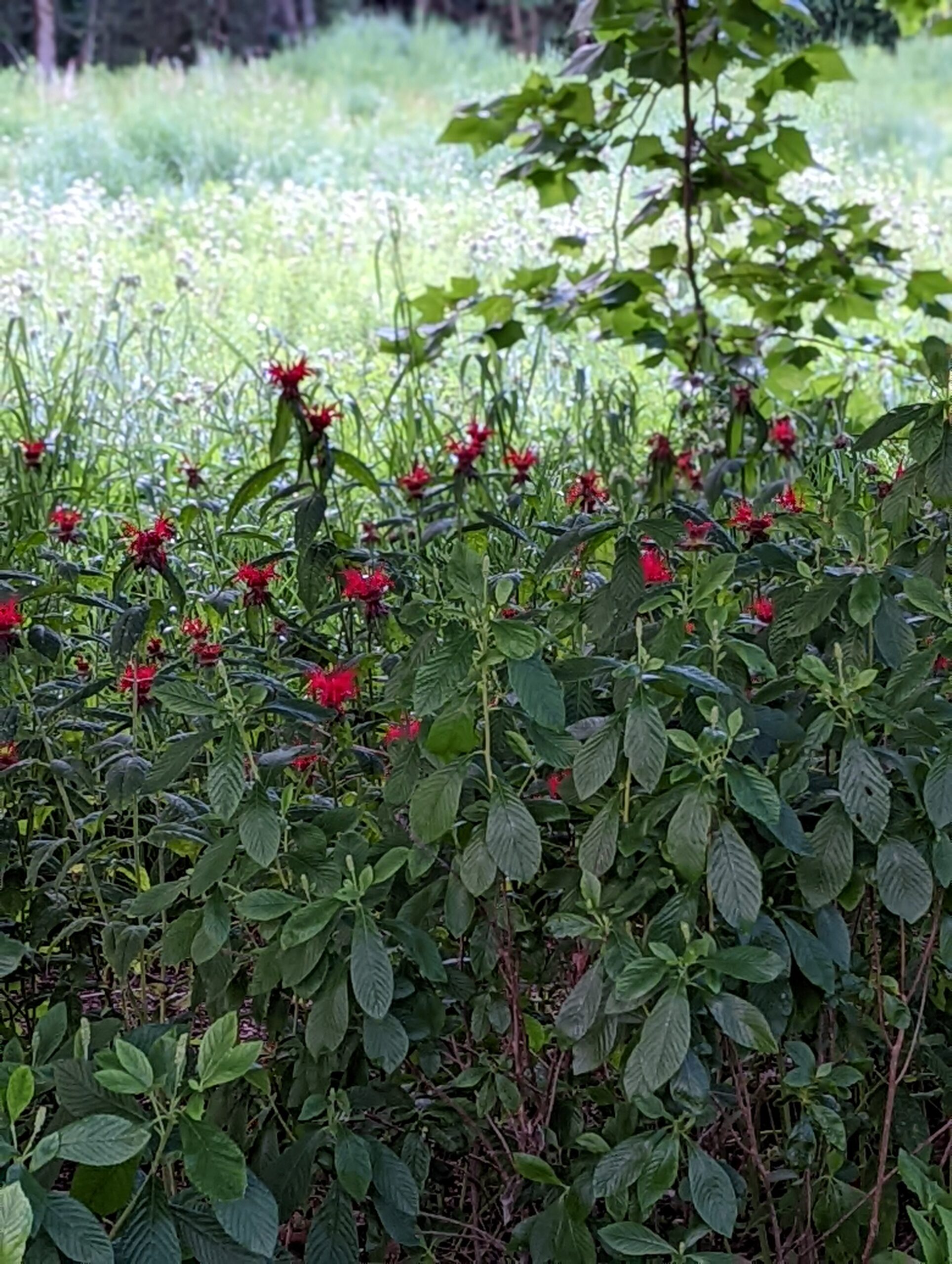
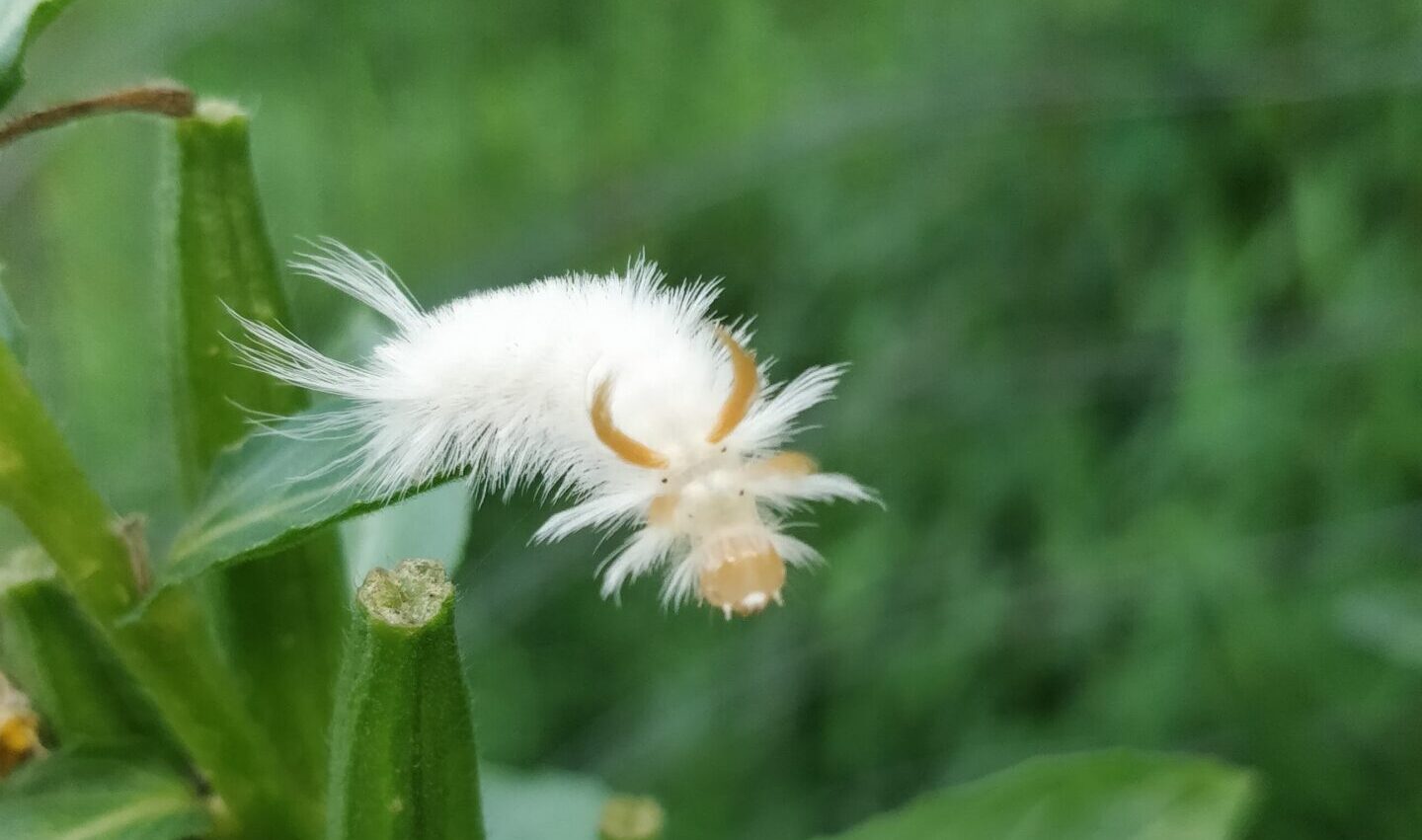
No responses yet